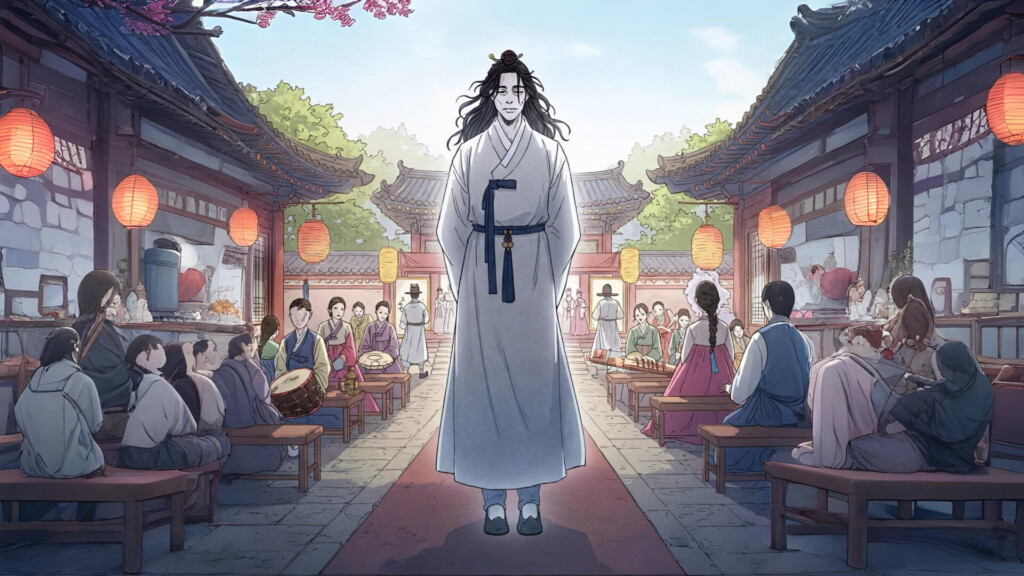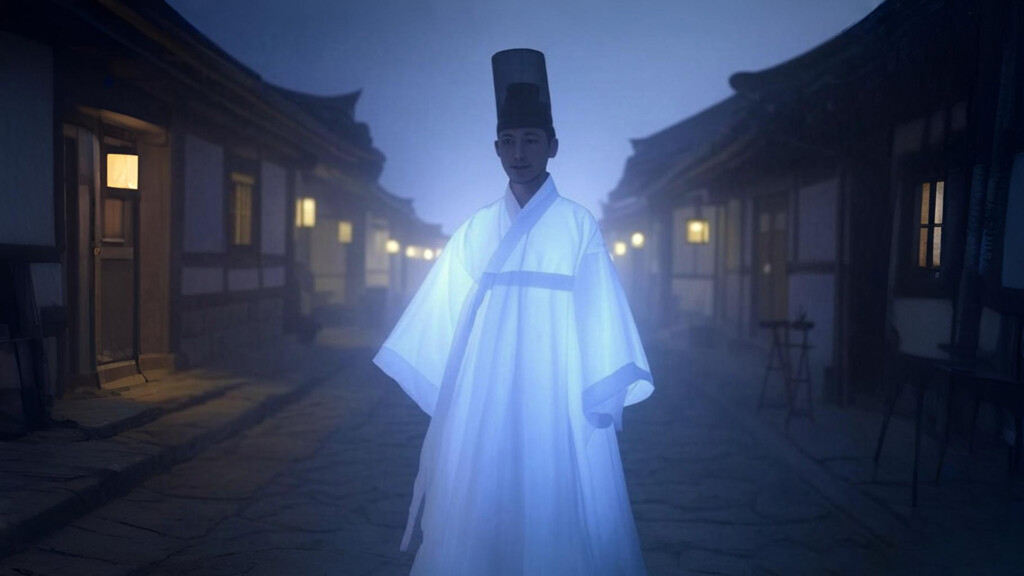In South Korea, unmarried men don’t just face societal pressure to get married—they also risk turning into ghosts. Not the terrifying kind like Sadako or Valak, but Chonggak Gwishin—wandering spirits of single men, doomed to eternal loneliness and unfulfilled desires, forever wearing their traditional gat hat.

Unlike Cheonyeo Gwishin (처녀귀신), the ghostly maidens with pale faces and long, disheveled hair covering their sorrowful expressions, Chonggak Gwishin takes the form of a young man who died before ever getting married, trapped between two worlds. But what makes this ghost unique is that it doesn’t just haunt out of vengeance—it also enjoys pranks and mischief.
The origin of the Changak Gwishin ghost
The legend of Chonggak Gwishin dates back to the Joseon Dynasty (1392–1897), or possibly even earlier, during the Goryeo period. Over centuries, these ghostly tales have reflected societal views on marriage and the fear of restless spirits.
In the strict Confucian society of the past, a man who died unmarried was seen as having suffered a tragic, irreparable loss—no descendants to honor his spirit, no family lineage to continue, and no rightful place in ancestral rites. As a result, these spirits were believed to linger in the human world, bound by regret for the life they never fully experienced.
The Places Where the Chonggak Gwishin Ghost Wanders
Chonggak Gwishin is commonly associated with abandoned villages, empty roads at night, or even wedding ceremonies. According to folklore, they are envious of married men and often cause supernatural disturbances near couples, such as:
- Blowing out candles during a wedding, as an ominous sign that the marriage is not blessed.
- Knocking things over or making eerie noises, unsettling both the bride’s and groom’s families.
- Haunting single men, trying to drag them into eternal loneliness as one of their own.
Terrifying Stories About Chonggak Gwishin
📌 In some rural areas, people believe Chonggak Gwishin intentionally disrupts weddings, causing flickering lights, loud thuds, or sudden gusts of wind to express its jealousy.
📌 In other folklore, these ghosts are known to tease young women, not out of malice, but out of an unfulfilled longing from their previous life. Some stories even claim that a Chonggak Gwishin can possess living men in an attempt to experience the love they were denied.

How Koreans Help the Chonggak Gwishin Ghost Find Peace
To help these spirits move on, Koreans perform a variety of rituals, ranging from religious ceremonies to symbolic gestures:
🔹 Ghost Marriage (혼령 결혼식, “Honryeong Gyeolhonsik”) – A wedding ritual between two unmarried deceased spirits, allowing them to be “together” in the afterlife and preventing them from wandering.
🔹 Shamanic Gut Ritual (굿) – A traditional shamanic ceremony to help the ghost release its attachments and pass on peacefully.
🔹 Burning Paper Brides – Some families burn paper effigies of brides, symbolically offering them as companions to lonely spirits, in hopes that it will bring them peace.
Chonggak Gwishin in Popular Culture
While not as widely depicted as Cheonyeo Gwishin, Chonggak Gwishin has made appearances in Korean media:
🎬 “Arang and the Magistrate” (2012) – Features a wandering male ghost in hanbok searching for a bride, inspired by Chonggak Gwishin lore.
📖 Webtoon “Oh My Ghost” – The mischievous male ghost protagonist resembles the playful nature of Chonggak Gwishin from folklore.
👻 Korean Variety Shows – The term “Chonggak Gwishin” is sometimes jokingly used to refer to middle-aged men who remain unmarried for too long.
A Symbol of Eternal Loneliness
In a way, Chonggak Gwishin is not just a ghost—it is the embodiment of perpetual solitude. No one waits for them, nowhere feels like home, and they roam endlessly, carrying an unquenchable yearning that will never be fulfilled.
Fun question: Could Chonggak Gwishin and Cheonyeo Gwishin become a couple? A bachelor ghost and a maiden ghost—if they sent you a wedding invitation, would you attend?
